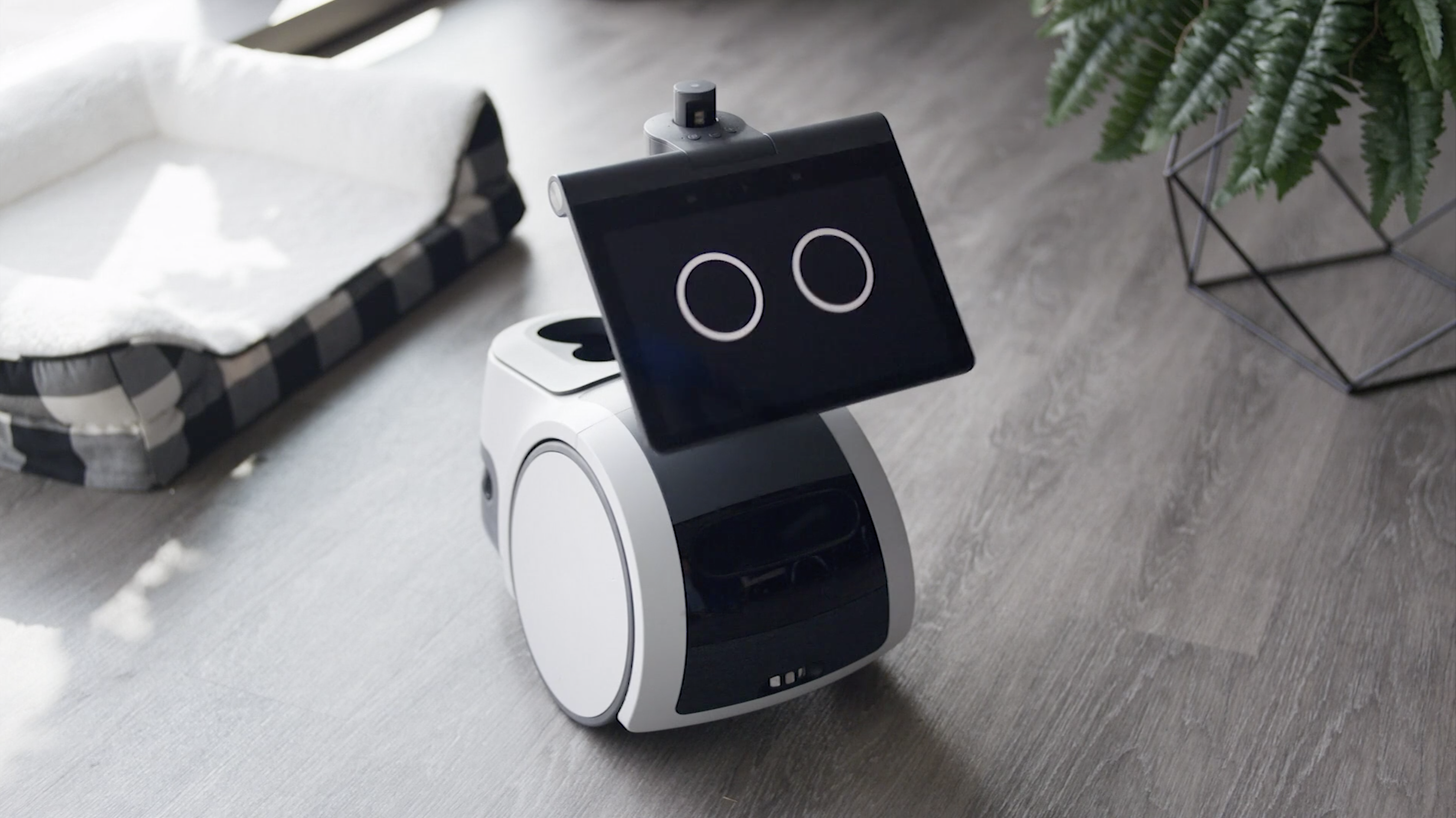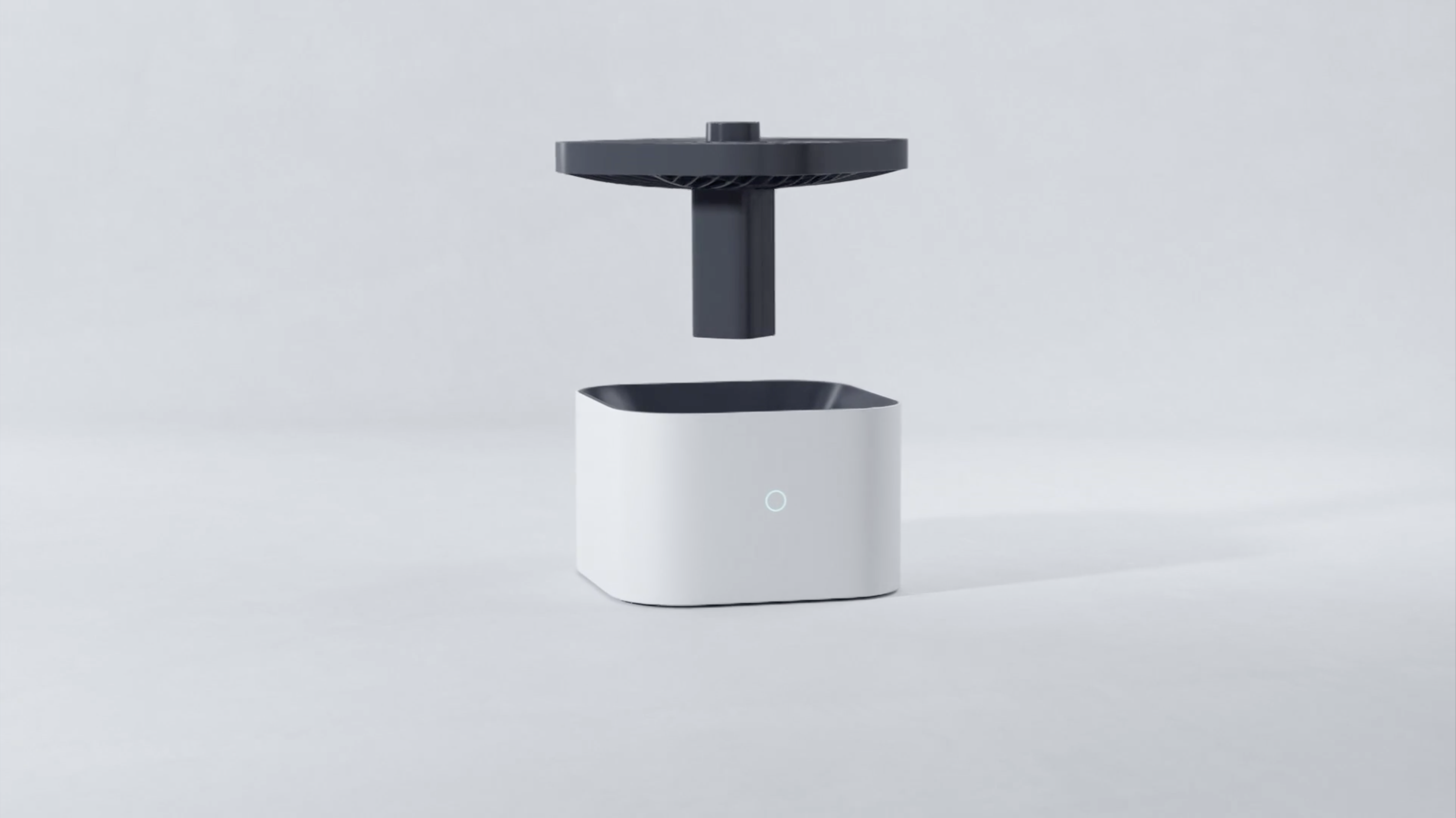I won’t buy the Amazon Astro — and not because it’s creepy
The Astro and Ring Always Home Cam promise whole-home surveillance, but they're simply not practical

Among the products announced at the big Amazon event, the Amazon Astro and the Ring Always Home Cam drew a lot of attention for their ability to roam around your home and record video wherever they go.
But while there are some genuine concerns about a robot and a flying drone that can follow you around the house and capturing your movements, that's not the reason why I'm hesitant to plunk down $1,000 on a robot. I just don't think either device looks terribly practical.
- The best home security cameras
- New Amazon Echo 15: Everything you need to know
Astro and Ring Always Home Cam privacy concerns
First, let's talk about privacy and security. The Astro certainly looks cute; it has two circular "eyes" on its display which can express a simulacrum of emotion, and the bot moves its head like a small puppy, curious to hear what you have to say.
But underneath this WALL-E-ness is the same surveillance capabilities as the Ring Always Home Cam, a drone that will fly through your house and stream any goings-on to your phone.
Both the Astro and the drone have cameras that can live stream video back to your phone; they can also be programmed to follow specific patterns through your house, patrolling while you're away and reporting back if anything's amiss.
In addition, both devices will work with Alexa Guard (though not the drone at launch) and deploy themselves if one of your Echo speakers hears glass shattering or some other suspicious sound, or if a motion or door sensor is triggered in your Ring Alarm system. Imagine a burglar's surprise if they're greeted with a buzzing drone or a rolling bot.
Using Amazon's Visual ID, the Astro can be trained to recognize familiar faces, the data of which remains on the device itself (the Amazon Echo Show 15 has a similar feature).
The Astro is also programmed to map the floorplan of your house — much like the best robot vacuums — so it can better navigate its way around. According to Vice, it will map out so-called choke points where it might get hit by people.
Unlike faces, though, the maps are stored in the cloud, rather than on the device, according to a story in Fast Company. Amazon says it "won’t use such maps for marketing, advertising, or product recommendations," as per the story. Saving maps in the cloud is standard practice among the best robot vacuums, including Roomba.
Many outlets have commented on the privacy and security issues surrounding both products. Both Ring and its parent company Amazon don't have the best track record when it comes to either, but seem to be taking steps in the right direction. Amazon's white paper on the Astro and its home monitoring features include such things as 256-bit cloud encryption and automatic deletion of faces it doesn't see for 18 months. Ring, too, has enabled end-to-end encryption on video from its security cameras and two-factor authentication.
Let's talk about practicality

If you want to turn your home into a digital fortress, it's far easier — and cheaper — to stick a few of the best home security cameras and smart displays around your house than to spend a grand on a robot. Let's say a burglar breaks a window to get into your house. After doing so, do you think they'll linger by the broken window long enough for the drone to take off, fly through your house, and then start filming video?
Same thing goes with the Astro — though perhaps the burglar will be so enchanted by its googly eyes that they'll stop long enough so that it can capture a good photo.
According to leaked documents obtained by Vice, the drone (or Astro) will attempt to identify an individual for 30 seconds, and then start following them around if they're unrecognized. Vice's story also says that the Astro is clumsy and prone to falling down stairs, but I'm skeptical that Amazon would release such an unfinished product. Even so, while the Astro can move at up to 1 meter per second, I don't think it will take much for someone to quickly disable it.
Based on my experience testing a number of the best home security cameras, I also know that video from a camera that's moving is often blurry or jittery, especially in darkened rooms. Unless the Ring Always Home Cam has the gimbal-mounted camera from the DJI Mini 2 built in, the quality of video is going to be far less than you'll get from a stationary camera.
Plus, the drone has a max flight time of roughly five minutes before it has to return to its base station and recharge. That's a real limitation, especially if you need to check in on more than one potential trouble spot.
I can see the Astro being potentially useful for those with mobility issues, but I also think it's going to get tiresome to have to stoop down to look at a screen every time someone tries to call you.
The Astro does have a cupholder for bottles, but it's a ways off from R2-D2 mixing drinks on Jabba's sail barge. I imagine it'll get real old real quick if I drive the Astro from the living room into the kitchen ,then use Drop-In to ask whoever's there to put a new beer into the robot.
Whenever I've tried out some sort of in-home robot, my wife has always wondered by it doesn't have a vacuum built in. Considering that the Astro is designed to roam all around your house, this would be a genuinely useful feature. In the meantime, maybe I'll just tape an Amazon Echo to the top of a Roomba.
- The best mesh Wi-Fi systems for your home
Sign up to get the BEST of Tom's Guide direct to your inbox.
Get instant access to breaking news, the hottest reviews, great deals and helpful tips.

Michael A. Prospero is the U.S. Editor-in-Chief for Tom’s Guide. He oversees all evergreen content and oversees the Homes, Smart Home, and Fitness/Wearables categories for the site. In his spare time, he also tests out the latest drones, electric scooters, and smart home gadgets, such as video doorbells. Before his tenure at Tom's Guide, he was the Reviews Editor for Laptop Magazine, a reporter at Fast Company, the Times of Trenton, and, many eons back, an intern at George magazine. He received his undergraduate degree from Boston College, where he worked on the campus newspaper The Heights, and then attended the Columbia University school of Journalism. When he’s not testing out the latest running watch, electric scooter, or skiing or training for a marathon, he’s probably using the latest sous vide machine, smoker, or pizza oven, to the delight — or chagrin — of his family.
